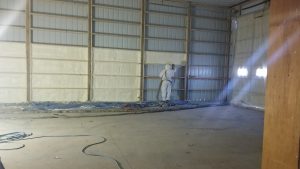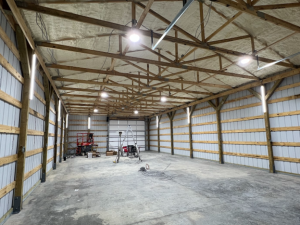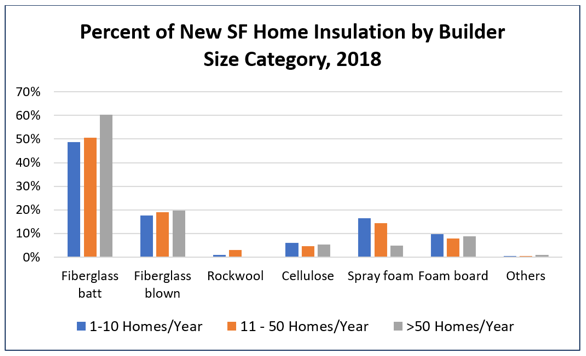Presenting actual factual evidence, from a peer reviewed and published study seems to have little bearing upon reality in today’s social media influenced world.
Instead, people tend to rely heavily upon those with a vested (financial) interest in promotion of something other than actual and factual truth. Those invested interests vary from those selling alternatives to properly pressure preservative treated lumber (various lumber protection products, precast concrete piers, brackets, etc.) to competing building structural systems (PEMBs, weld ups, etc.).
In reality, I know a couple people in either lumber or post frame building industries. Having spent my entire adult life in these tends to add to those I know. I have yet to meet anyone, who can prove to me they have actually experienced a properly pressure preservative treated wood building column rot.
Zero.
Of course there are always those who have stories such as, “My Uncle’s cousin says he knows of somebody, who knew somebody who had all of their pole barn poles rot off”. Could be – and those poles were most probably inadequately treated (or maybe not at all).
In order to put this matter to rest and ease my already untroubled mind, I utilized Google to do some research.
Well, it turns out four fine people named Stan Lebow, Bessie Woodward, Grant Kirker and Patricia Lebow got their collective thinking caps together and authored an article entitled “Long-Term Durability of Pressure-Treated Wood in a Severe Test Site”. Said article was published in Advances in Civil Engineering Materials, Vol. 2 No. 1, 2013 on pages 178-188 (for those of you who want to read it in its full and unabridged glory: https://www.fpl.fs.fed.us/documnts/pdf2013/fpl_2013_lebow001.pdf).
Our team of authors was motivated, as stated in this article’s introduction, by this:
“Pressure-treated wood has been widely used as a durable construction material in the United States for over a century. However, despite its long history of use, there are relatively few reports on the long-term decay and insect resistance of pressure-treated wood”.
Now, as it so happens, USDAFS (U.S. Department of Agriculture Forest Service) has a test site located near Saucier, Mississippi.
You ever been to Saucier, Mississippi?
This plot has a relatively high annual rainfall (67 inches average) and warm temperatures (average high temperatures are 80 degrees F. or more from May until November) creating a harsh decay environment. Eastern subterranean termites are active at this site. Bugs, heat, water – you have it all! This location is within American Wood Protection Association (AWPA) Deterioration Zone 5, Severe Hazard – there is no greater severe hazard classification.
As a control, some untreated posts were placed and all failed in less than three years!
 Current Building Code standard for pressure-preservative treated lumber for structural use is UC-4B (read one of my better articles of all time regarding pressure-preservative treating here: https://www.hansenpolebuildings.com/2012/10/pressure-treated-posts-2/). UC-4B requires a chemical retention for many water borne treatments such as ACZA, CCA-B and CCA-C of 0.60 lb/ft^3 (pounds of chemical per cubic foot of lumber). With retention levels LESS than this current UC-4B requirement, there have been ZERO failures in these chemically treated woods in tests of well over 60 years!
Current Building Code standard for pressure-preservative treated lumber for structural use is UC-4B (read one of my better articles of all time regarding pressure-preservative treating here: https://www.hansenpolebuildings.com/2012/10/pressure-treated-posts-2/). UC-4B requires a chemical retention for many water borne treatments such as ACZA, CCA-B and CCA-C of 0.60 lb/ft^3 (pounds of chemical per cubic foot of lumber). With retention levels LESS than this current UC-4B requirement, there have been ZERO failures in these chemically treated woods in tests of well over 60 years!
When will those properly pressure preservative treated timbers rot?
Impossible – no, however probably not within your grandchildren’s grandchildren’s lifespans.
And there you have it, research and all.










Bookmarking this page for future use in case I get negative feedback regarding my plans.
I’m in northern Wisconsin and posts need to be 48″ deep or so in earth. What if the building area is sand with good drainage but the water table is just above the 48″ level. Could there be deterioration if the bottom of the treated post was exposed to that water table?
In order for decay to occur, there must be oxygen present – as there is no oxygen in soil below the upper several inches, your water table will not adversely affect longevity of properly pressure preservative columns.
We require slabs of concrete be insulated from moisture
Why not grab some contractor bags used for waste (the ones’s I am referencing are sold by Home Depot) and bag the concrete holding the treated post.
This inexpensive method to keep moisture away from the concrete surrounding the post should expand the lifetime of the wood
In our case, our engineers specify a concrete bottom collar, so concrete backfill around columns ends 24″ below grade. There is no oxygen in the soil at that depth, so becomes a non-issue.
Those poly bags do allow some water to migrate through. It would take probably at least a 15mil bag to stop water (and not tear during construction).
What are the thoughts of using a post protector sleeve, the 30″ one for only at grade?
While a UC-4B pressure preservative treated glulam column should last forever, if you feel more confident in using such a sleeve, then by all means do so.